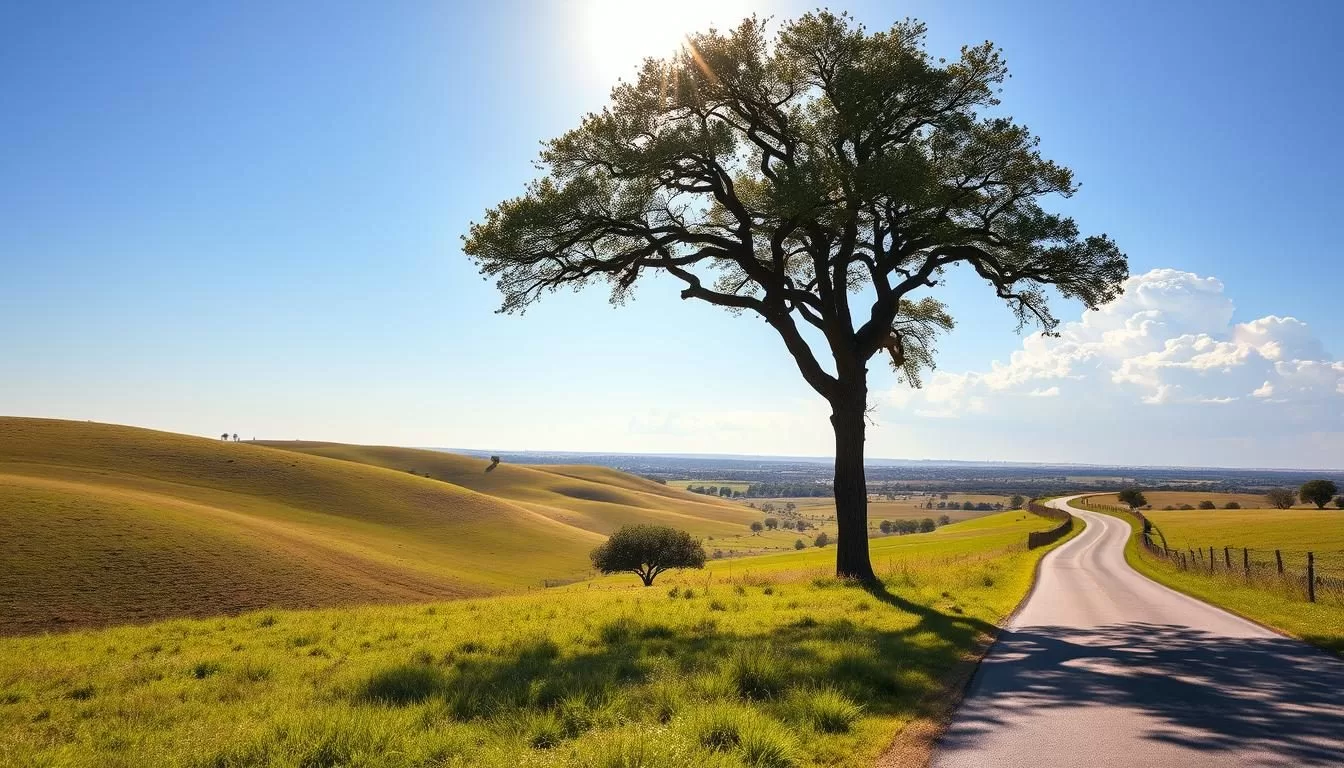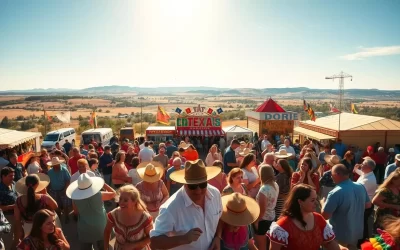Planning a trip to Texas? Understanding the state’s diverse climate is crucial for a comfortable and enjoyable vacation.
Texas experiences a wide range of temperatures throughout the year, from hot, humid summers to mild winters, with spring and fall offering the most pleasant weather for most travelers.
With diverse climate zones creating unique weather patterns across the state, making informed decisions about when to visit can enhance your experience of Texas’s natural beauty, outdoor activities, and cultural events.
This guide will help you determine the ideal time to visit based on your weather preferences and planned activities, ensuring a trip that is both memorable and enjoyable.
Understanding Texas’s Unique Climate Zones
With its vast size and varied landscapes, Texas experiences a range of climates that shape its weather patterns. The state’s diverse geography, spanning over 800 miles from east to west, creates distinct climate zones that can make it feel like different countries.
Gulf Coast Influence on Weather Patterns
The Gulf Coast plays a significant role in shaping Texas’s weather, bringing moisture and humidity that affects much of the eastern part of the state. This influence results in a humid subtropical climate along the coast, with significant rainfall and mild winters.
Regional Weather Variations Across the State
Regional variations in Texas are dramatic, with East Texas experiencing higher rainfall and humidity, while West Texas is drier with greater temperature fluctuations. The Texas Hill Country, situated between Austin and San Antonio, has a unique semi-arid climate, with hot summers and mild winters.
Year-round Humidity Levels and Their Impact
Year-round humidity levels vary significantly across Texas, with coastal areas experiencing consistently high humidity, while western regions remain much drier. Understanding these humidity levels is crucial for preparing for the specific weather conditions you’ll encounter in different parts of the state.
- Texas spans multiple climate zones, from the humid subtropical Gulf Coast to the semi-arid western regions.
- The Gulf Coast significantly influences Texas weather, bringing moisture and humidity.
- Regional variations are dramatic, with different regions experiencing different weather patterns.
src=”https://seowriting.ai/32_6.png” alt=”Texas climate zones”>
Spring in Texas: March to May
Spring in Texas is a season of renewal, marked by mild temperatures and breathtaking natural beauty. The Texas Hill Country awakens in spring, from mid-March to mid-May, making it the best time for those who love good weather.
Wildflower Season and Natural Beauty
The area’s wildflowers, like bluebonnets, turn the landscape into a colorful wonderland. This season transforms Texas landscapes with spectacular wildflower displays, particularly the famous bluebonnets that carpet fields and roadsides throughout the Hill Country. The Wildflower Capital of Texas and scenic drives like the Bluebonnet Highway offer breathtaking natural beauty.
Temperature Ranges and Precipitation Patterns
You’ll enjoy mild days, often in the 60s and 70s°F. Spring showers bring brief but intense thunderstorms, making the weather exciting. The comfortable temperatures typically range from the 60s to 70s°F, making it ideal for outdoor activities.
- Mild temperatures ranging from the 60s to 70s°F
- Occasional thunderstorms followed by clear skies
- Comfortable weather for hiking, biking, and exploring
Spring Festivals and Outdoor Events
Spring hosts numerous festivals celebrating everything from wildflowers to music, food, and cultural heritage across the state. It’s perfect for enjoying outdoor festivals. However, spring break crowds can impact popular destinations, so planning ahead is essential if you’re visiting during March.
Summer Weather Patterns: June to August
Summer in Texas is characterized by sweltering heat and high humidity from June to August. You can expect temperatures to soar, often exceeding 90°F, especially in July and August.
Managing the Heat and Humidity
To stay safe during the hot summer months, it’s crucial to manage the heat and humidity effectively. You should stay hydrated by drinking plenty of water and take breaks in shaded or air-conditioned areas. The combination of high temperatures and humidity, particularly in eastern and coastal regions, can make the heat feel even more intense.
Best Summer Activities Despite High Temperatures
Despite the sweltering heat, you can still enjoy various activities during the summer. Texans have adapted to the heat with numerous water-based activities, including swimming holes, river tubing, and visits to coastal beaches. Early mornings and evenings are also more comfortable for outdoor exploration.
Hurricane Season Awareness for Gulf Coast Visitors
If you’re visiting the Gulf Coast during the summer, it’s essential to be aware of the hurricane season, which runs from June to November. The highest risk period is between August and September. Staying informed about weather forecasts can help you plan your activities and stay safe.
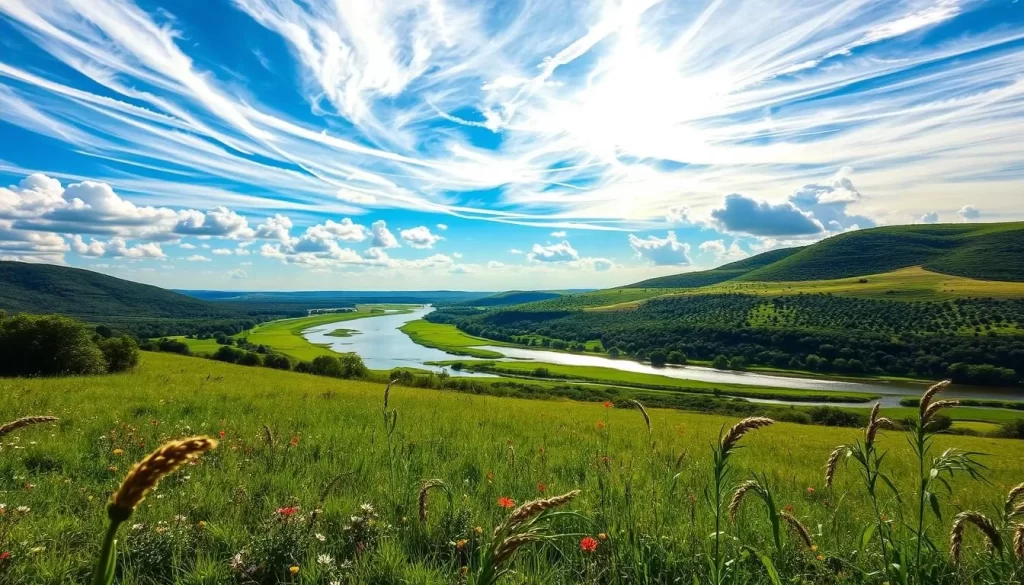
| Month | Average High Temperature | Average Precipitation |
|---|---|---|
| June | 90°F | 3.5 inches |
| July | 95°F | 2.5 inches |
| August | 96°F | 2.8 inches |
Fall Season in Texas: September to November
As the sweltering summer days fade away, Texas transforms into a haven for outdoor enthusiasts. The fall season, spanning from September to November, brings a welcome relief from the summer heat, making it an ideal time to explore the state’s diverse landscapes.
Temperature Drops and Comfortable Conditions
During the fall months, temperatures gradually drop to comfortable ranges, with daytime highs typically between 70-80°F. The evenings are cooler, offering a nice break from the day’s activities. This comfortable weather is perfect for outdoor fun such as hiking, wine tasting, and enjoying harvest festivals.
Fall Foliage and Scenic Drives
While Texas may not be renowned for its fall foliage like some other regions, certain areas such as Lost Maples State Natural Area showcase impressive autumn colors, typically peaking in late October to early November. The scenic drives through these areas are particularly breathtaking, making them a must-visit during the fall season.
Harvest Festivals and Cultural Events
Fall in Texas is also a time for numerous activities, including harvest festivals, wine events, and cultural celebrations across the state. These events take advantage of the comfortable weather, allowing visitors to enjoy the best of Texas’s culture and cuisine. Some of the top events include pumpkin patches, apple picking, and Oktoberfest celebrations.
- Enjoy the pleasant fall weather, ideal for outdoor exploration.
- Experience the vibrant harvest festivals and cultural events.
- Take in the breathtaking scenic drives and fall foliage.
Winter in Texas: December to February
Winter in Texas, spanning from December to February, brings a unique set of weather conditions across the state. You can expect varied temperatures and activities that make the season worthwhile for visitors.
Mild Winter Temperatures in Southern Regions
The southern regions of Texas experience mild winter temperatures, rarely encountering freezing conditions for extended periods.
Winter Activities and Holiday Celebrations
Despite the mild temperatures, Texas hosts a range of winter activities and holiday celebrations. You can enjoy festive events, light displays, and holiday markets throughout the state.
| Region | Average Low Temperature | Average High Temperature |
|---|---|---|
| Southern Texas | 40°F (4°C) | 65°F (18°C) |
| Panhandle | 25°F (-4°C) | 50°F (10°C) |
| Coastal Areas | 45°F (7°C) | 70°F (21°C) |
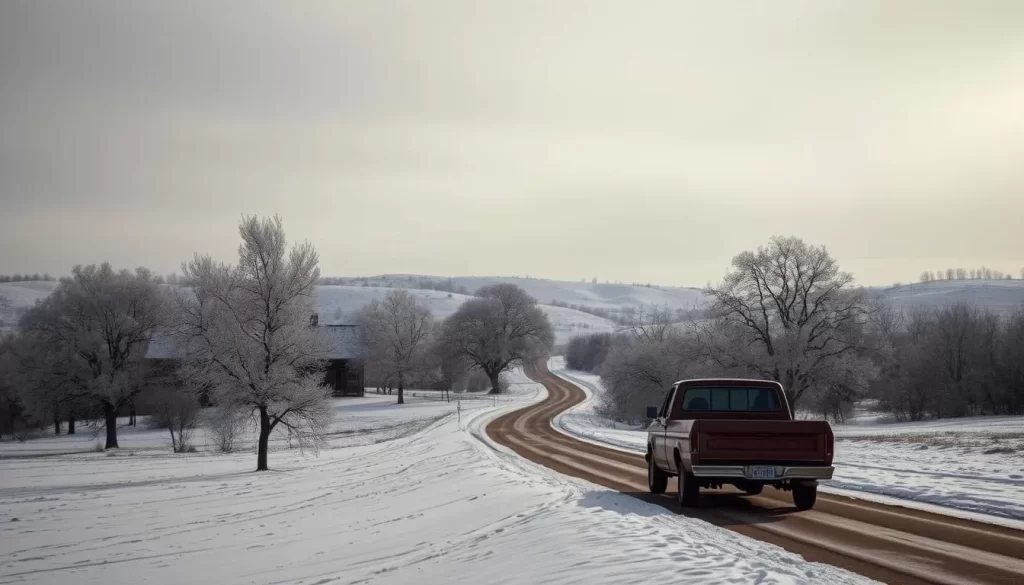
Texas, United States: Best Months for a Weather-Savvy Trip
The Lone Star State’s weather varies significantly across different regions and times of the year, impacting the best times to plan your visit. Understanding these variations is key to enjoying your trip to Texas.
March to May: Wildflower Season
Spring in Texas, from March to May, is renowned for its vibrant wildflower blooms, particularly the iconic bluebonnets. This period is ideal for nature photography and scenic drives through the rolling hills of the Texas Hill Country.
October to November: Mild Weather Period
The fall season, specifically October to November, offers mild, sunny days with low humidity, making it perfect for exploring Texas’s cities, parks, and outdoor attractions without the extreme heat.
Weather-Based Activity Planning
Planning your activities according to the weather is crucial for maximizing your Texas experience. Certain activities are better suited to specific seasons, and avoiding the extreme heat of summer or potential cold snaps of winter makes the shoulder seasons ideal for most outdoor fun and exploration.
| Season | Best For | Weather Conditions |
|---|---|---|
| Spring (March to May) | Wildflower viewing, nature photography | Mild temperatures, occasional rain |
| Fall (October to November) | City exploration, outdoor attractions | Mild, sunny days, low humidity |
Essential Weather Considerations for Outdoor Activities
To enjoy the great outdoors in Texas, it’s vital to be aware of the weather conditions and plan accordingly. The state’s diverse climate zones mean that outdoor activities can be significantly impacted by the time of year and regional weather patterns.
Understanding these patterns can help you make the most of your trip. For instance, the timing of outdoor fun like hiking and nature exploration is crucial.
Timing for Hiking and Nature Exploration
The best times for hiking and nature exploration in Texas are during the spring and fall seasons. During these periods, temperatures are moderate, and the landscapes are either blooming with wildflowers or displaying vibrant fall colors. Summer activities should be planned for early morning or late evening to avoid the intense midday heat.
Weather for Water Activities and Beach Visits
Water activities like beach visits, river tubing, and lake recreation are popular from late spring through early fall when water temperatures are comfortable. Notably, the Gulf Coast beaches have different optimal times compared to inland lakes and rivers; Gulf waters are warmest from June through September.
It’s also important to check weather forecasts before heading out, especially during the spring storm season when conditions can change rapidly. Different regions of Texas offer varied outdoor experiences across the seasons, with desert regions of West Texas being best explored in fall and spring, while coastal activities can be enjoyed for a longer portion of the year.
- Plan outdoor activities according to the weather to ensure a safe and enjoyable experience.
- Take advantage of the moderate spring and fall seasons for hiking and nature exploration.
- Enjoy water activities during the warmer months, and be mindful of the different optimal times for Gulf Coast beaches versus inland water bodies.
Monthly Rainfall Patterns and Their Impact
Texas’s rainfall varies significantly across different months and regions, impacting travel plans and outdoor activities. The state’s diverse climate zones contribute to these variations, making it essential to understand the rainfall patterns.
Peak Precipitation Periods
May and June are typically the wettest months in many parts of Texas, experiencing what is known as the “spring rainy season.” A secondary rainy period occurs in September and October, particularly in central and eastern regions. During these periods, flash flooding can be a serious concern, especially in the Hill Country.
Drought Seasons and Water Activities
Summer drought conditions can affect water activities, as river levels may drop too low for tubing or kayaking. Western Texas receives significantly less rainfall than eastern regions, with some areas averaging less than 10 inches annually.
Storm Season Planning
Storm season planning is crucial for spring and fall visits, as thunderstorms can develop rapidly and sometimes produce severe weather, including tornadoes. Understanding these patterns helps you plan a smart trip.
Temperature Ranges Throughout the Year
As you plan your visit to Texas, it’s essential to consider the temperature ranges throughout the year. Texas experiences wide temperature ranges, with variations depending on the region and proximity to the Gulf Coast.
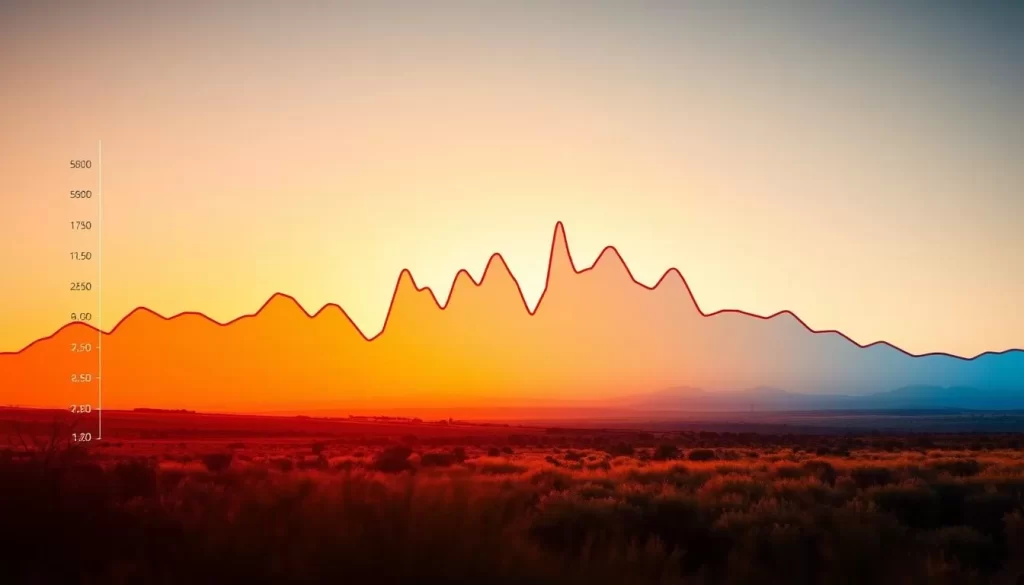
Hottest and Coldest Months by Region
The temperature varies significantly across different regions in Texas. July and August are consistently the hottest months, with average highs ranging from the mid-90s°F in eastern regions to over 100°F in western areas. In contrast, January is typically the coldest month, with average lows ranging from the 20s°F in the Panhandle to the 40s°F along the coast.
| Region | Hottest Month | Coldest Month |
|---|---|---|
| Eastern Texas | July (mid-90s°F) | January (40s°F) |
| Western Texas | August (over 100°F) | January (20s°F) |
| Gulf Coast | August (mid-90s°F) | January (40s°F) |
Comfort Zones for Different Activities
The comfort zones for various activities vary based on temperature. For hiking and sightseeing, temperatures between 60-75°F are ideal. For water activities, temperatures exceeding 80°F are most enjoyable. Spring and fall offer the most comfortable temperature ranges for most outdoor activities, typically between 65-85°F during daytime hours.
Weather-Related Travel Tips and Packing Guide
Before you embark on your Texas journey, knowing what to expect from the weather can make all the difference. Texas’s climate varies significantly across different regions and seasons, making it essential to pack and plan accordingly.
Seasonal Clothing Essentials
Packing the right clothing is crucial for a comfortable trip. Layering is key as temperatures can fluctuate significantly between morning and afternoon, especially during spring and fall. For summer, prioritize lightweight, breathable clothing to combat the heat. In contrast, winter travelers should include warm layers for unexpected cold fronts.
- Spring and fall: Pack a light jacket or sweater for cooler evenings and rain gear for sudden showers.
- Summer: Include lightweight, breathable clothing, high-SPF sunscreen, sunglasses, and a wide-brimmed hat.
- Winter: Bring a warm coat, gloves, and hat, even for southern regions.
Weather-Appropriate Gear and Accessories
Beyond clothing, there are several essential accessories to consider for your Texas trip. A refillable water bottle is vital year-round, particularly in warmer months to stay hydrated. Additionally, utilizing weather apps that provide hourly forecasts can be incredibly useful in navigating Texas’s rapidly changing weather conditions.
Local Events and Weather-Dependent Festivals
From spring to winter, Texas hosts a wide array of festivals that showcase its unique culture and traditions. The state’s diverse climate and geography make it an ideal place for various activities and celebrations throughout the year.
Spring and Summer Celebrations
During spring, Texas celebrates the wildflower season with outdoor fun and festivities. Events like the Bluebonnet Festival in Burnet and the Wildflower Celebration in Chappell Hill attract nature enthusiasts. In the summer, the state hosts iconic festivals such as rodeos, the State Fair of Texas, and outdoor music festivals that thrive despite the heat.
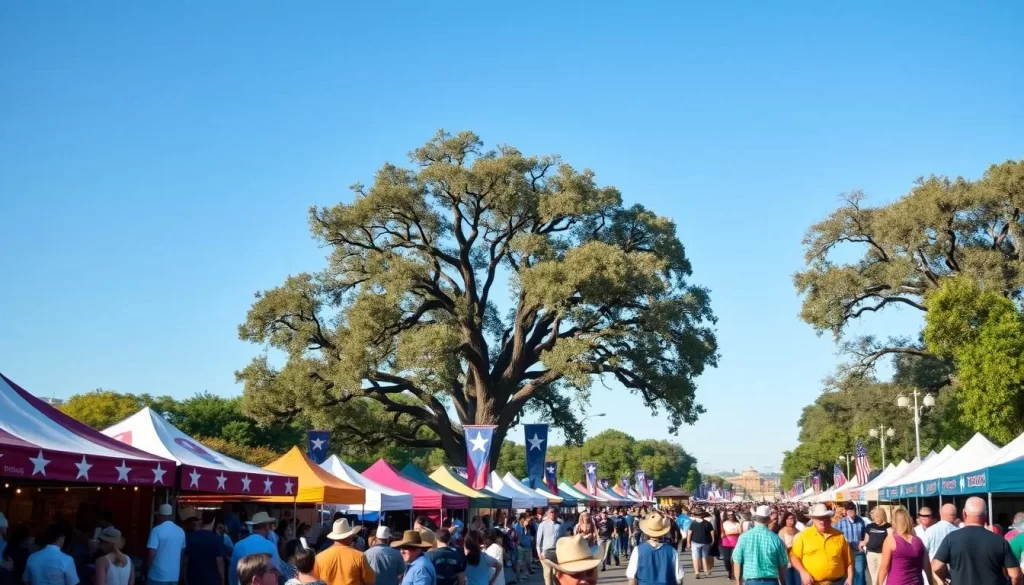
Fall and Winter Festivities
As weather conditions become more favorable in the fall, the state hosts harvest-themed festivals, including wine festivals in the Hill Country, Oktoberfest celebrations, and pumpkin patches. In the winter, holiday light displays, Christmas markets, and New Year’s celebrations take advantage of Texas’s relatively mild weather during this seasons.
Indoor Attractions for Weather-Challenging Days

Don’t let rain or extreme heat dampen your Texas adventure; there are plenty of indoor attractions to explore. Texas offers abundant indoor attractions that provide refuge during weather-challenging days, whether you’re escaping summer heat or winter rain.
Museums and Cultural Venues
Major cities like Houston, Dallas, San Antonio, and Austin boast world-class museums covering everything from art and history to science and technology. The state’s cultural venues include historic theaters, concert halls, and performance spaces that showcase Texas’s rich musical heritage regardless of outside weather conditions.
Shopping and Entertainment Centers
Shopping destinations range from massive malls like The Galleria in Houston to unique boutique districts in city centers across the state. Entertainment centers featuring bowling, arcade games, and indoor amusements provide fun, family-friendly options during inclement weather. You can enjoy these activities while staying cool or dry.
In addition to these attractions, many cityes have developed underground or climate-controlled walkways in downtown areas, allowing you to explore urban centers comfortably despite challenging weather. Culinary experiences, including food halls, cooking classes, and distinctive restaurants, offer delicious indoor activities in every major Texas city. You can also enjoy indoor water parks and aquariums, providing water-based fun regardless of outside temperatures or rain.
Conclusion
To enjoy the best of Texas, it’s crucial to consider the weather, as it varies significantly across seasons and regions. The best times to visit are during spring (March to May) and fall (October to November), when the weather is most pleasant.
During spring, you can enjoy spectacular wildflower displays and cultural festivals. In fall, comfortable temperatures and harvest-related events highlight the state’s agricultural heritage. Planning your trip according to the best time for your activities will maximize your enjoyment.
A weather-savvy trip to Texas requires flexibility and awareness of regional climate variations. By understanding the weather patterns, you’ll be able to make the most of your visit, enjoying the unique opportunities each season presents.
The above is subject to change.
Check back often to TRAVEL.COM for the latest travel tips and deals.
Here are some Tours & Sightseeing suggestions that might pique your interests!
